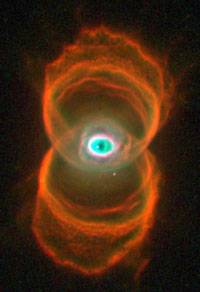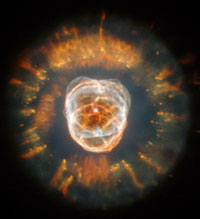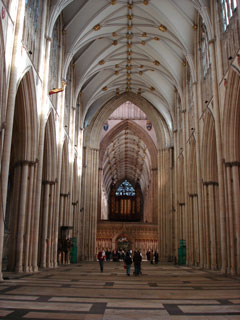
THE
TRANSCENDENCE OF NATURE AND HUMAN CREATIVITY
My
starting point is my relationship with human experience on the one hand of the awe of nature and on the other of
the best expressions of human endeavour. In this I include not only such disciplines as art, architecture, music
and writing but also science, morality, even politics (e.g. the United Nations declaration on human rights) and,
perhaps the most important, meditation and theology. By ‘theology’ I mean the understanding and expression of
our relationship with God, with each other and with the rest of creation.
This site is concerned with
our aesthetic apprehension of Theology at all levels, i.e. not only how pleasing, how perfect, how transcendent
and how integrated with the rest of creation are our responses to God or a divine creator, but how this reflects
on us and in our every day lives. As a working definition, for me aesthetic theology is that which pleases,
promotes transcendency and which reaches into the core of our being as something which is holistically right and
true because it unifies something within us, thereby making us not so much feel good as to reach a state of
recognition which originates or reaches outside our field of normal existence.
THE SPIRITUAL, INTELLECTUAL AND ETHICAL CONTENT OF
AESTHETICS
I feel, however, that aesthetic theology
should go further, if only because of the complex nature of the human consciousness and its need for integration
and expression on both the intellectual and spiritual level to reach its full potential. Consequently it needs
to be not only all embracing and contain within itself a spiritual and an ethical content, in that ethics itself
is a non-material, transcendent understanding. Aesthetic theology should also be an integrated discipline where
historic and biblical truth and scientific investigation integrate seamlessly with, indeed and sometimes
condition, the spiritual sides of our nature.
THE
MEANING OF 'AESTHETIC THEOLOGY'
Having researched
many sites using this terminology I am struck by a curious use of these two words. Here we have an adjective,
“aesthetic”, and a noun, “theology”. The first describes or qualifies the second, not vice versa. Too often have
I found sites in which “aesthetic Theology” is used to describe that which is really a “Theology of Aesthetics”.
In a ll the sites I have visited searching “Theology of Aesthetics”, theology is accepted
as sacrosanct, i.e. unchangeable. “Aesthetics” becomes the variable and discussed as to how it can enhance,
underpin or promote a given theology.
ll the sites I have visited searching “Theology of Aesthetics”, theology is accepted
as sacrosanct, i.e. unchangeable. “Aesthetics” becomes the variable and discussed as to how it can enhance,
underpin or promote a given theology.
That, for me, is not the meaning of “Aesthetic Theology”. I
consider it is theology which is the variable, as defined by our understanding of the word 'aesthetic'. Thus we
need to examine theology in the light of our understanding of aesthetics in all its forms, including inherent
truth and relevance to all.
Examples, for me, which induce such transcendent reality would include
the wonder of Nature through its changing seasons, the Christian Church’s liturgical year based as it is on the
rhythms of nature but which applies it to the human condition, art which seeks to reproduce beauty linked to
moral value, architecture which links humanity to God by transporting the mind onto a higher plane of thought
whilst creating wonder at the human ability to build in such a way, the music of such as Bach, Byrd, Palestrina
and Taverner which uses the very building blocks of all creation, vibrations, to produce subtle harmonies and
interplay of parts to express the human condition on an eternal score, the simplicity of message of truly
profound leaders of any religion the core of which is centred on love, acceptance and evolution towards a
transcendent state of existence.
THE CREATION
STORY AND AESTHETICS
Where to start? Words written
some 2,500 years ago have great resonance with aesthetic theology. The following is taken from the first chapter
of Genesis, the first book of the Hebrew Bible.
“In the beginning God created the heaven and the
earth. And the earth was without form and void”.
“And God saw every thing that he had made, and, behold, it
was very good”
“And God said, Let us make man in our own image, after our likeness”
These
statements from the Hebrew Bible give us an indication of the relationship of God to all that he had made and
the special relationship of humanity. Here it must be remembered that this creation came out of chaos.
Consequently the creation of humanity “after our likeness” was to place a special and onerous responsibility on
humanity, one in conjunction with God not only to understand Creation but to help hold back the forces of chaos,
thus allowing creation to flourish. Global warming indicates that the need for this sentiment is as alive now as
it was millennia ago, yet have we learnt the lesson?
Aesthetics are, in fact, at the very heart of
our being because they were there at the point of creation. According to Genesis one could say that creation
came into being out of a love of order, beauty and creation. In that ‘man’ was created ‘in the likeness of God’
it could be that aesthetics is an original, possibly the original form of communication between humanity and
God, in which the mind of God can be accessed and understood, and thereby acted upon. This can be approached
only through the integration of all our aesthetic senses in one great unification of ourselves to the Divine.
How this is understood in our every day lives proceeds to include the province of logic and reason the two often
being intertwined.
PROBLEMS OF
THE PURELY INTELLECTUAL APPROACH
Yet founding a
world view on a form of logic which has no sense of goodness, universal morality, value judgements or of the
creative process and its effects, such a view demeans humanity in that it encompasses less than half of its
programmed capabilities.
Even so, we have to careful. Perhaps realness does not exist. Perhaps
everything, the reality of beauty, order, love, creative ability, and morality
genuinely is purely in the eye of the beholder. In the final event it for us, individually but cognisant of all
creation, to experience and so to evolve.
the reality of beauty, order, love, creative ability, and morality
genuinely is purely in the eye of the beholder. In the final event it for us, individually but cognisant of all
creation, to experience and so to evolve.
So, faced with these imponderables, what is aesthetic
theology? For me, as a Christian, it contains the following 3 simple but active elements, active in that they
are, above all, synergistic acts of communication between a human being, the creator and the rest of creation.
Aesthetic theology is not a theory, nor a set of words or rules to be followed, nor a statement of belief
requiring subjugated conformity to authority (e.g. the Christian creeds). Yes, these have their place as
pointers to the human propensity for error and to another plane of existence, but they should always remain as
what they are, products of a bygone time and culture which gave them utterance. Words, theories, explanations
are always capable of refinement and redefinition. Aesthetics transcend all this.
AESTHETICS AS COMMUNICATION
Thus aesthetic theology, in essence, is a timeless process
of communication at the deepest level of our existence with that which gave us being and by which we understand
our role in creation and our interdependence with all that is and can be.
How do we achieve it? It is
a never ending process and one which lies, or should lie, at the heart of all religions which aim to control
human destiny. Here is but a small start:-
1 Love God or that which one regards as transcendent by
moving your mind onto another plane of existence through prayer, meditation and aesthetics.
2 Love your
fellow human being and all creation by understanding them, by appreciating them, and by coexistence. In this I
include not only acts of charity, social responsibility and creativity. I include respect for planet earth and
all that therein lives, and on a human level the willingness to accept all religions who exercise respect in
return and do not practise exclusivity.
3 Be actively creative. Seek for new understandings and
explanations of existence but be aware that all knowledge and beliefs are constructs of the present or a
previous age, thus capable of change  and evolution. The expression or
description of them may ultimately need redefining as scientific discoveries and further revelations occur.
and evolution. The expression or
description of them may ultimately need redefining as scientific discoveries and further revelations occur.
As a codicil - when we look back at religious activity say between 1000 and 1800 what do we most remember?
Is it the many sermons of the period, the religious war between Roman Catholic and Protestant, the theology of
the period, the creeds of Christianity or is it those great medieval cathedrals, the music of Palestrina and
Bach, or the art of Michaelangelo with his concept of the divine origin of beauty.
Click on AESTHETIC THEOLOGY to access the new site
The awe of Creativity. The top two pictures are courtesy of NASA, the third courtesy of medieval masons in York, the 4th, sunset from our house, all courtesy of God.